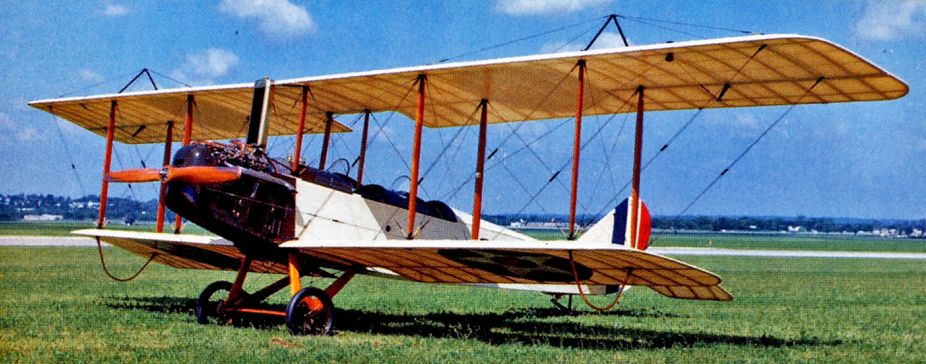
Варианты
- Standard - J-1 - 1917 - США
- Lincoln-Standard - LS.5 - 1923 - США
Standard. Самолеты
Компания "Standard Aircraft Corporation" была образована в Плейнфилде, штат Нью-Джерси, в 1916 году с целью постройки самолетов для Вооруженных сил. Почти сразу компания получила первый заказ - на поставку трех бипланов Standard H-2. Самолет был спроектирован на базе Sloane H-2 и представлял собой трехместный биплан с открытой кабиной и оснащался двигателем Hall-Scott A-5 мощностью 125 л. с. Он предназначался для ведения разведки. Вскоре был получен заказ от Армии США на девять усовершенствованных бипланов H-3, оснащенных такими же двигателями. Еще три учебно-тренировочных самолета с двумя поплавками были поставлены в ВМС США под обозначением H-4H.
Следующим проектом компании стали самолеты серии J, первая модель которой SJ оснащалась рядным двигателем Hall-Scott A-7 мощностью 100 л. с., а основная серийная модификация J-1, или SJ-1, отличалась лишь некоторыми деталями (всего компанией "Standard" построено около 800 машин).
Главным недостатком всех этих самолетов был ненадежный двигатель Hall-Scott, а попытки специалистов компании разработать более эффективный самолет не были успешными. К числу созданных компанией моделей относились JR, похожие на SJ, но с двигателем Wright-Hispano мощностью 150 л. с. (Армия США приобрела лишь шесть машин в роли УТС повышенной летной подготовки), и модифицированный вариант JR-1B с некоторыми изменениями, включая крылья одинакового размаха, новое хвостовое оперение и двигатели Hall-Scott A-5 мощностью 175 л.с. (построены шесть самолетов). Несколько JR-1B были поставлены Почтовой службе США.
<...>
Описание:
- Standard. Самолеты
- Flight, November 1923
NEW AMERICAN NIGHT FLYING MAIL 'PLANES
Фотографии
-
Мировая Авиация 241
Бипланы семейства J компании "Standard" внешне были схожи с Curtiss JN-4 и применялись в качестве учебно-тренировочных. На фотографии - самолет J-1.
-
Air Enthusiast 2003-03 / G.Auliard - Maine attraction
Регистрационный номер: N22581 [4] The superb Standard J-1 N22581.
-
Aeroplane Monthly 2000-04 / M.Oakey, T.Harmsworth - News
Регистрационный номер: N22581 [4] Owls Head Standard J-1 N22581 airborne over New England
-
Air Enthusiast 2003-03 / G.Auliard - Maine attraction
Регистрационный номер: N22581 [4] -
Air Enthusiast 1992-12 / F.Joseph - Signed by ... Orville Wright
Koerner with his first aircraft, a Standard, circa 1924.
-
Aviation Historian 7 / American Classics
One of the better-known aviation-themed films, Universal’s The Great Waldo Pepper of 1975 covered the post-World War One life and times of a disillusioned US Army flying instructor turned barnstormer, played by Robert Redford. The still-impressive flying scenes were shot under the direction of another film flying legend, Frank Tallman. The film met with positive reviews, in no small part thanks to the flying sequences. This photograph was taken as Pepper - actually Tallman - flies a Standard J-1 biplane through a small Texas town to stir up interest in the “flying circus” visiting the area. Susan Sarandon played the part of a doomed wingwalker in the film and the dummy visible on the lower port wing portrays her during this challenging flying sequence.
-
Aeroplane Monthly 1991-08 / Personal album. Civil
A Ryan Standard photographed at Dycer Airport, south Los Angeles, circa 1930. The early activities of the Mahoney-Ryan company began with modifying World War One Standard biplanes into cabin transports, much as Avro did with the 504K and Bristol with the F.2B. Powered by the 150 h.p. Hispano-Suiza, nine Ryan-Standards had been built in 1922.
-
Flight 1923-11 / Flight
The Curtiss Night Mail 'Plane, 163 h.p. Curtiss C.-6 engine.
-
Aeroplane Monthly 2000-04 / M.Oakey, T.Harmsworth - News
Регистрационный номер: N22581 [4] Owls Head Standard J-1 N22581 undergoing winter restoration and re-covering at Rockland, Maine.
-
Aeroplane Monthly 1984-02 / F.Winstanley - Those Celluloid Flying Fools (2)
A Standard SJ-1 immediately after a “runaway” stunt in the late Twenties.
-
Air International 1995-11 / D.Allport - History of In-Flight Refuelling
This artist's impression depicts the first recorded air-to-air transfer of fuel on November 21, 1921, when stuntman Wesley May, with a 50lb can of petrol strapped to his back, climbed from a Lincoln Standard trainer onto a Curtiss JN-4 Jenny to pour fuel into its fuselage petrol tank.
Другие самолёты на фотографии: Curtiss JN-4 Jenny - США - 1916
- Фотографии












